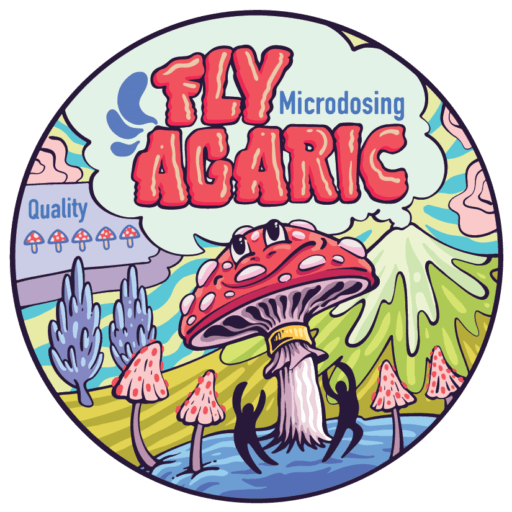Beyond the Fairytale Fungus: Unveiling the Secrets of Amanita Muscaria
For centuries, Amanita muscaria, known as the spotted wonder or Fly Agaric, has people intrigued by its allure. With a striking bright red cap, adorned with white speckles, this captivating mushroom isn’t just exquisite but legends also whisper of its potential to influence mood. But is there truth behind this charming folklore? Join us as we unravel the mysteries behind Amanita muscaria and explore the science behind murmurs of a brighter outlook.
Description and Habitat
The fungus Amanita muscaria belongs to phylum Basidiomycota and family Amanitaceae of the kingdom Fungi. this fungus isn’t just a pretty sight in the forest but a complex character with an intriguing background. This specie exhibits a complex ecological relationship and life cycle. Don’t be fooled by its charm as this mushroom holds a duality danger and beauty.
Physical Appearance
- It is characterized by a bright red cap to orange or yellow cap (pileus). The size often exceeds a diameter of 20cm.
- The surface is adorned with white universal veil remnants, also known as warts or patches.
- These verrucae offer taxonomic information and helps in identification. The underside of the cap shows a pattern of white gills or lamella.
Habitat
- This fungus forms mycorrhizal associations with different tree species, commonly birch, pine and spruce.
- Commonly found in Europe, especially France, Germany and Russia.
- Widely spread in North America, this mushroom is found in Canada, Pacific Northwest of the US along the Rocky Mountains.
History and Cultural Significance
Amanita muscaria, also known as the fly agaric, is a mushroom steeped in rich history and cultural significance. Recognizable by its vivid red cap, this iconic fungus has been featured in folklore and religious rituals across various cultures for centuries
- This iconic mushroom has a rich history, captivating imagination and intrigue across cultures and decades. From its role in ancient rituals to presence in folklore, fly agaric can be dated back to a millennium.
- The earliest interaction of Amanita muscaria with humans come from archaeological discoveries in Siberia dating back to almost 4000 years.
- The ancient Indian texts, Vedas, mention a sacred psychoactive drink called Soma. Scholars debate whether this mushroom with its psychotropic abilities could be considered as the core ingredient for Soma.
- Across Siberia, A. muscaria has a significance across indigenous cultures as Shamans may have ingested it for the purpose of inducing trances to seek altered states of consciousness for connection with the spirits.
- A theory suggests that maybe A. muscaria may have played an important role in Valkyrie legends. It is said that warriors gained strength due to the hallucinations associated with this mushroom.
- In some Slavic cultures, Amanita muscaria represents good luck charms. While in some European traditions, it depicts Santa’s reindeer.
The Potentials of the Fly Agaric
The Amanita muscaria with its captivating look is more than just an attractive mushroom. It is a powerful combination of potential benefits, psychoactive properties and deadly characteristics.
- Amanita muscaria has traditional use in folk medicine and is said to be useful for treating insect bites, warts and rheumatism.
- Modern day researchers are investigating the active ingredients of Fly Agaric, especially Muscimol and Ibotenic acid. These compounds help fall asleep faster and deeper as well as boost better mood, which helps get rid of anxiety.
- Microdosing Amanita muscaria may improve focus, clarity, and mental acuity.
- The mushroom can stimulate creative thinking and problem-solving abilities.
- Users often report a deeper connection to their spiritual beliefs and practices.
- The anti-inflammatory properties of Amanita muscaria can help alleviate chronic pain and inflammation.
The Amanita muscaria is a captivating specie in the forest with its attractive crimson cap and white polka dots. It embodies a fascinating duality. While traditional and folk practices hint at potential medical benefits and modern science digs deeper into its bioactive compounds for safe application for anxiety, insomnia and better mood, but still scientific validation is still under development. On the other hand, its psychotropic abilities are intricately linked to both spiritual activities and a darker, more hazardous side. Fly amanita serves as a reminder of nature’s complex kaleidoscope, a potential source of medical breakthroughs but not without reminding everyone to respect its power. It is recommended to avoid self-experimentation or use without professional guidance because of the inherent dangers associated with Amantia muscaria.
For enthusiasts interested in safely exploring the world of Amanita muscaria, Amanita Fly offers a range of quality fly agaric products. Visit Amantia Fly to discover more.

